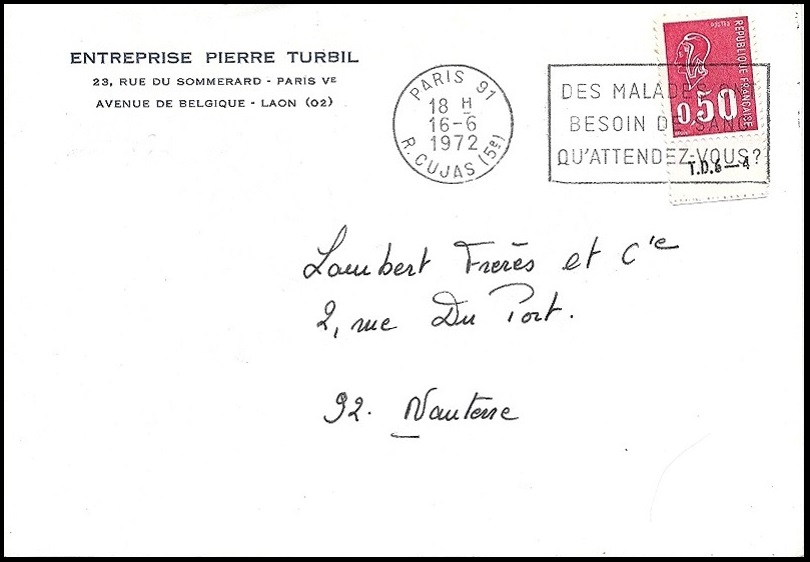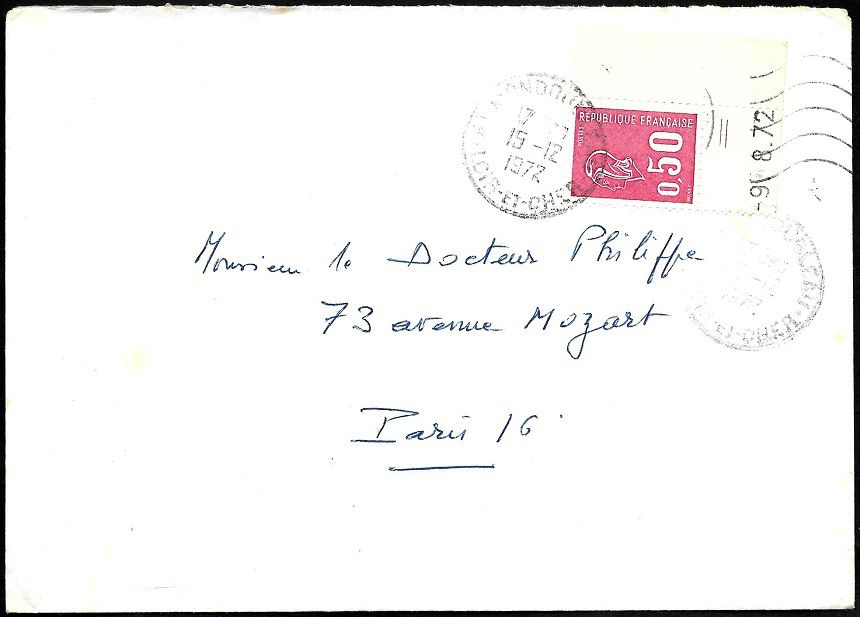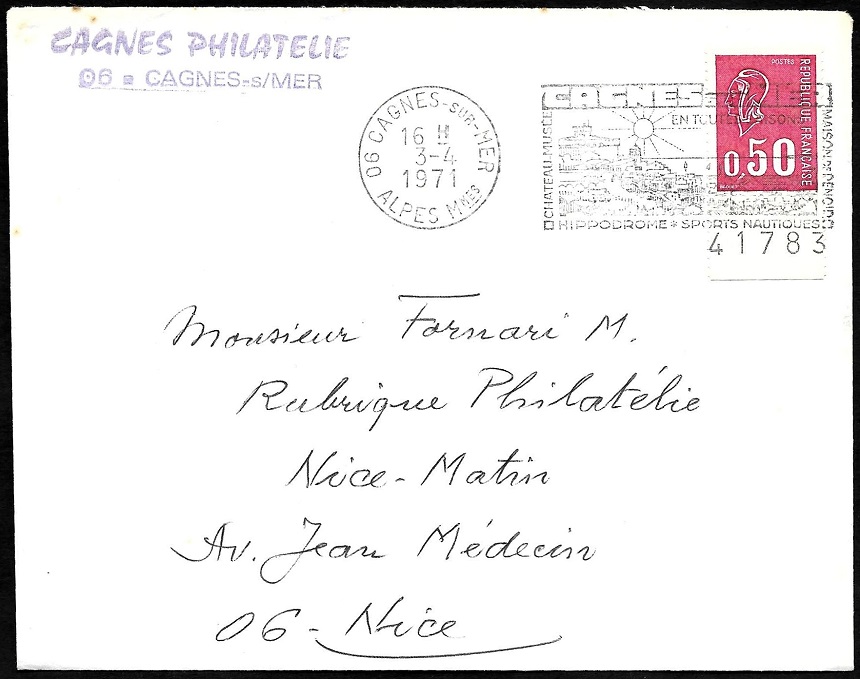
Introduction
In the article The aspects of the 0,50 F Marianne de Béquet stamp, we defined the 21 aspects which can be associated with the stamp 0,50 F Marianne de Béquet.We will now illustrate these aspects by means of covers and, also, to show covers highlighting certain peculiarities of the manufacturing of stamps. By what I mean covers where a stamp is attached to an horizontal margin with an indication of press, or to a dated or numbered vertical margin or to a dated corner of sheet or to an electronic mark... I really like this type of cover because it allows to specify the origin of the stamp, but especially because it is difficult to find "nature", most of the users throwing these margins of paper which have no interest for them before sticking the stamp on the envelope.
For some of the following illustrations, we will use two possible presentations:
- that of can be rolled over image, that is to say an image with test areas which, when rolled over with the mouse, appear pinkcoloured and trigger the occurence of an image specifying the content of the affected area. We will write the term can be rolled over image at the head of the caption of such an image;
- that of on mouse-over image: an enlargement of the stamp can appear when the mouse is moving over the image, the enlargement disappearing when the mouse leaves the area of the image. For these images, we shall write on mouse-over below or above the image.
Stamps stemming from sheets
Stamps without phosphorescent bands produced on TD6 presses



